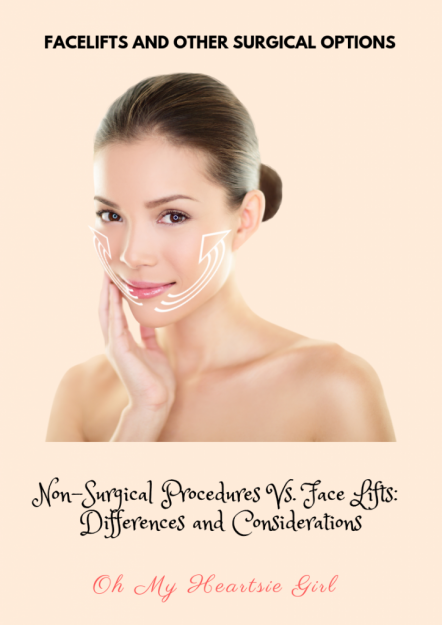Although many of us don’t care to admit it, the reality is that aging takes a toll on everyone. As we grow older, we may show signs of slower reflexes or problems with our hearing and eye health. We might grow accustomed to muscle aches, foot pains, and having to go a bit slower than we used to.  As a society, we’ll do just about anything to reverse the signs of aging or to stop them before they ever take hold. That’s just one reason why plastic surgery continues to grow in popularity. In fact, the United States leads the way here, as our nation is recognized as having the highest number of cosmetic procedures worldwide. In 2018 alone, there were 17.7 million surgical and minimally invasive cosmetic procedures performed, representing an increase of more than 250,000 procedures from just a year prior.
As a society, we’ll do just about anything to reverse the signs of aging or to stop them before they ever take hold. That’s just one reason why plastic surgery continues to grow in popularity. In fact, the United States leads the way here, as our nation is recognized as having the highest number of cosmetic procedures worldwide. In 2018 alone, there were 17.7 million surgical and minimally invasive cosmetic procedures performed, representing an increase of more than 250,000 procedures from just a year prior.
If you feel dissatisfied with the way age has taken a toll on your appearance or desperately want to preserve what you’ve got, you might consider undergoing some type of surgical procedure or facial rejuvenation. But should you go under the knife or opt for a non-surgical procedure?
Non-surgical facial procedures
For those who feel that traditional plastic surgery is not the right course of action for them, non-surgical facial procedures may be a viable option. These treatments might include so-called facial rejuvenation procedures such as chemical peels, laser resurfacing, dermal fillers, Botox, fat transfers, and other injectables.
One of the key benefits of non-surgical treatments is the lack of necessary recovery time. Pain management is typically not an issue at all since any discomfort experienced with these non-invasive treatments can usually be taken care of with a local anesthetic or over-the-counter pain medication.
Although some patients do experience some swelling after treatment, most require no necessary downtime. In many cases, a patient can go right back to work (even the same day). For someone who might not feel comfortable with the idea of invasive surgery, the minimal pain and downtime will likely be very appealing. In addition, there are fewer medical risks involved in non-surgical procedures.
It’s also important to note that non-surgical facial procedures are generally much more affordable than traditional facelifts. While these procedures do need to be touched up from time to time (or after several months, in some cases), they are more financially feasible for many patients.
That said, the ongoing maintenance involved may represent an added expense that may not fit into one’s budget. Still, it’s often an excellent option for people who aren’t able to spend tens of thousands of dollars in one go. And what’s more, these procedures usually offer a subtler, more natural approach that surgery can’t always provide.
Facelifts and other surgical options
No matter what type of surgical procedure is involved, patients must consider that all surgeries come with risks. That’s certainly not to say it’s the wrong choice; it merely means it’s essential to consider all your options prior to making a decision. Because these surgeries are inherently more invasive, patients will experience longer recovery periods that may be accompanied by more substantial pain or discomfort than one would experience with non-surgical options.
Simply put, surgical procedures require a more substantial commitment. On the positive side, facelifts and other surgical improvements produce results that are long-lasting. You won’t have to undergo procedures every few months to improve your appearance. If you’re looking to make a more significant change to your appearance, rather than a subtle one, surgery is usually going to be the best option.
Plastic surgery is becoming more affordable, which is one reason why the number of procedures performed per year is on the rise. But it’s still a financial investment. For some, making that investment in themselves is absolutely priceless in terms of newfound confidence and physical improvement. You must keep in mind, however, that elective surgery is not usually covered by insurance.
If finances are a concern, you may have to make sacrifices elsewhere in order to pay for a procedure with a qualified surgeon. The flip side of this is that it may be a better option in terms of long-term costs. Some surgical procedures are more affordable than others as well, so you’ll want to conduct thorough research prior to making a decision for your situation.
Ultimately, both non-surgical procedures and facelifts or other surgical options serve an important purpose for patients. Each one can be used to improve someone’s appearance and allow them to gain a new lease on life.
This post may contain affiliate links, which means I might receive a small commission if you make a purchase using a link.
Related:
Considering Cosmetic Procedures-What You Need To Know
Top 4 Benefits of Laser Skin Rejuvenation Treatments for Younger Looking Skin
This post may contain automatically and manually added affiliate links,
which means I might receive a small commission if you make a purchase using a link at no extra cost to you.





